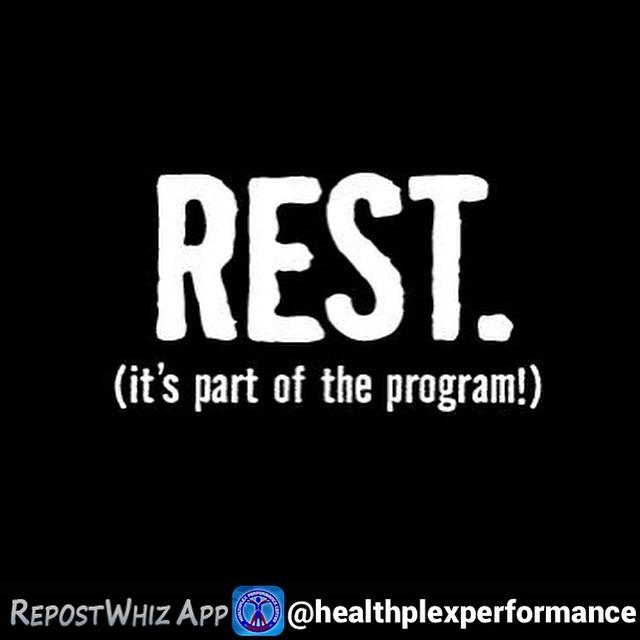In today’s fast-paced world, maintaining a consistent fitness routine is a commendable achievement. However, the line between dedication and exhaustion can often blur, leading many to experience burnout—a state of physical and emotional fatigue that can derail even the most committed individuals. Understanding how to navigate this fine balance is crucial not only for sustaining your fitness journey but also for preserving your overall well-being. This article is designed to guide you through practical strategies to prevent burnout, helping you to cultivate a healthier, more enjoyable relationship with exercise. With empathy and insight, we’ll explore how to listen to your body’s signals, diversify your workouts, and foster a mindset that embraces rest as an integral part of progress. Whether you’re a seasoned athlete or just beginning your fitness path, these tips will empower you to stay motivated, energized, and resilient.
Recognizing the Signs of Overtraining and Fatigue
It’s crucial to stay attuned to your body’s signals, as they can indicate when you’re pushing too hard. Physical symptoms are often the first to appear. You might notice persistent muscle soreness, decreased performance, or a higher resting heart rate. These are your body’s way of telling you it needs a break. Additionally, if you find yourself getting sick more often, it might be a sign that your immune system is compromised due to excessive training.
Mental and emotional signs are just as important. Feeling irritable, experiencing mood swings, or having trouble sleeping can all be indications of overtraining. If you find that your motivation has plummeted and you’re dreading workouts you once loved, it’s time to reassess your routine. Remember, it’s not just about pushing through; it’s about maintaining a sustainable and enjoyable fitness journey.
- Physical Symptoms: Persistent soreness, increased injuries, elevated heart rate.
- Mental Signs: Lack of motivation, mood swings, sleep disturbances.
- Emotional Indicators: Increased irritability, feelings of burnout.
Listening to your body and mind is key to preventing burnout. Implement rest days, prioritize sleep, and ensure your nutrition supports your activity level. By recognizing these signs early, you can make the necessary adjustments to keep your fitness routine both effective and enjoyable.

Creating a Balanced Workout Schedule for Sustainable Progress
To ensure your fitness journey remains invigorating and effective, crafting a workout schedule that fosters sustainable progress is key. A balanced routine not only optimizes your physical gains but also helps in maintaining mental well-being, reducing the risk of burnout. Here’s how to design a schedule that caters to both body and mind:
- Variety is Vital: Incorporate different types of exercises into your weekly plan. Include a mix of cardio, strength training, flexibility exercises, and rest days. This diversity prevents monotony and works various muscle groups, ensuring holistic fitness development.
- Listen to Your Body: It’s essential to pay attention to how your body responds to workouts. If you notice signs of fatigue or strain, it might be time to adjust the intensity or take an additional rest day. Prioritizing recovery is not a setback; it’s a strategic move towards sustainable progress.
- Set Realistic Goals: Establish achievable milestones that align with your lifestyle and current fitness level. Celebrating small victories keeps motivation high and minimizes the pressure that often leads to burnout.
Implementing these strategies into your workout regimen creates a rhythm that promotes growth and enjoyment. Remember, the journey to fitness is a marathon, not a sprint, and a balanced schedule is your steadfast companion on this path.

Incorporating Rest and Recovery to Enhance Performance
In the pursuit of fitness goals, it’s easy to overlook the vital role that rest and recovery play in enhancing performance. Integrating these elements into your routine not only helps in avoiding burnout but also accelerates progress. Here’s how you can effectively incorporate rest and recovery into your fitness regimen:
- Listen to Your Body: Your body communicates its needs through signs like fatigue, soreness, and lack of motivation. Pay attention to these signals and allow yourself the necessary time to recuperate.
- Schedule Rest Days: Just as you plan your workouts, schedule regular rest days to give your muscles time to repair and grow. This doesn’t mean complete inactivity; consider engaging in light activities such as walking or yoga.
- Prioritize Sleep: Quality sleep is essential for recovery. Aim for 7-9 hours of sleep each night to ensure your body has enough time to heal and recharge.
- Incorporate Active Recovery: On days when you’re not doing intense workouts, opt for low-impact exercises. This approach keeps your body moving without the strain of high-intensity training.
By weaving rest and recovery into your fitness routine, you create a sustainable path that enhances your overall performance. Remember, progress is not just about pushing harder; it’s also about giving your body the time it needs to become stronger.
Listening to Your Body and Adjusting Your Routine Accordingly
One of the most empowering things you can do for your fitness journey is to develop a keen sense of awareness about what your body is telling you. This doesn’t just mean paying attention to obvious signs like pain or fatigue, but also tuning into subtler signals such as fluctuations in energy levels, mood changes, and even sleep patterns. Your body is a complex, intelligent system that communicates its needs constantly; learning to listen can help you avoid the pitfalls of overtraining and burnout.
- Recognize the Signs: If you’re feeling unusually tired, irritable, or unmotivated, these could be signs that your body needs a break. Don’t ignore these signals—adjust your routine accordingly by incorporating more rest days or switching to lower-intensity activities.
- Embrace Flexibility: It’s okay to deviate from your plan. Maybe today isn’t the day for a high-intensity workout, and a gentle yoga session or a brisk walk would be more beneficial. Flexibility in your routine not only aids recovery but can also reignite your passion for exercise.
- Prioritize Recovery: Recovery isn’t just about rest; it’s an active process that includes stretching, hydration, and nutrition. Implementing recovery strategies ensures your body is ready for your next workout, reducing the risk of injury and maintaining overall well-being.
Remember, your fitness routine should be a sustainable part of your life, not a source of stress. By listening to your body and making thoughtful adjustments, you empower yourself to maintain a balanced, healthy lifestyle. Prioritizing your well-being will not only help you achieve your fitness goals but also enhance your overall quality of life.








































